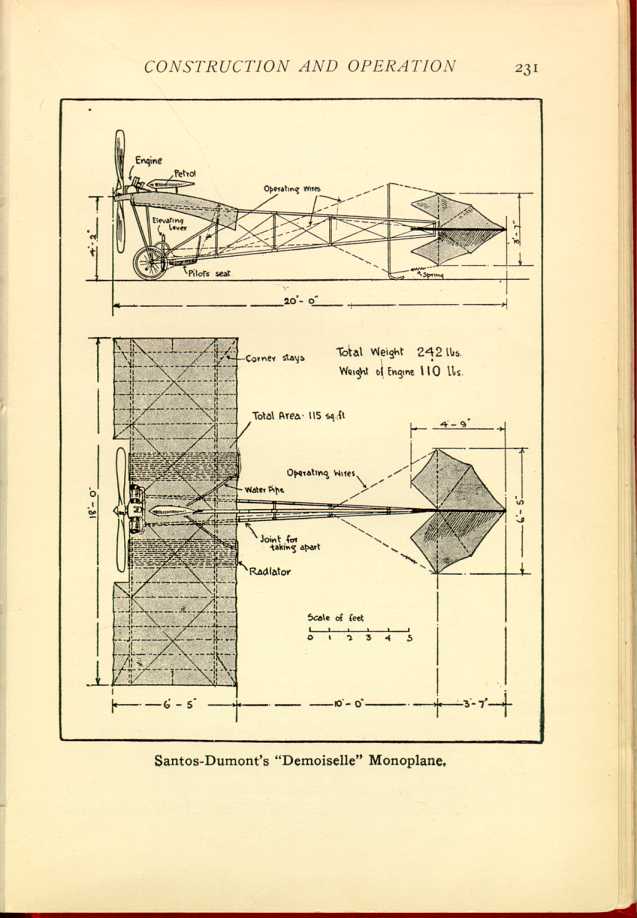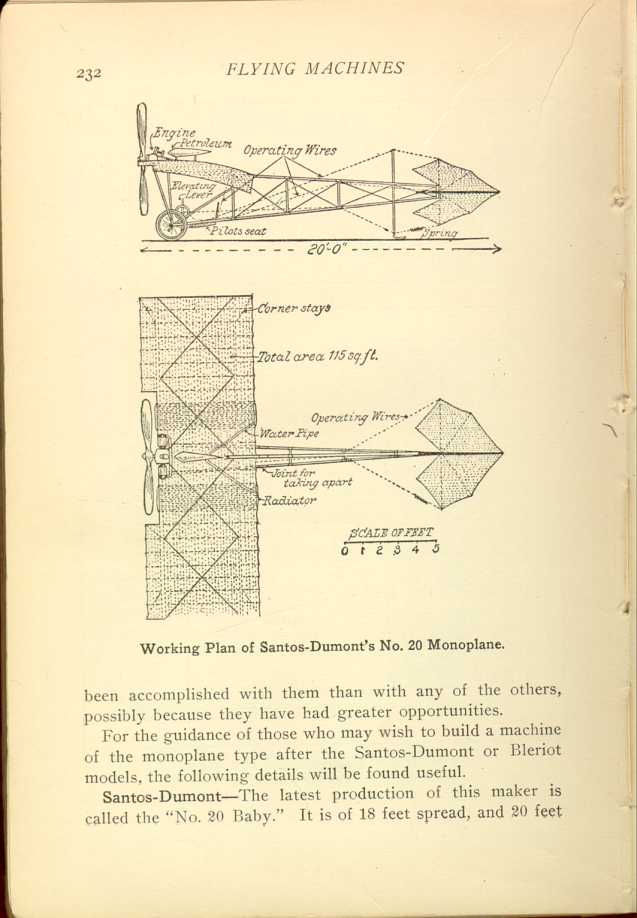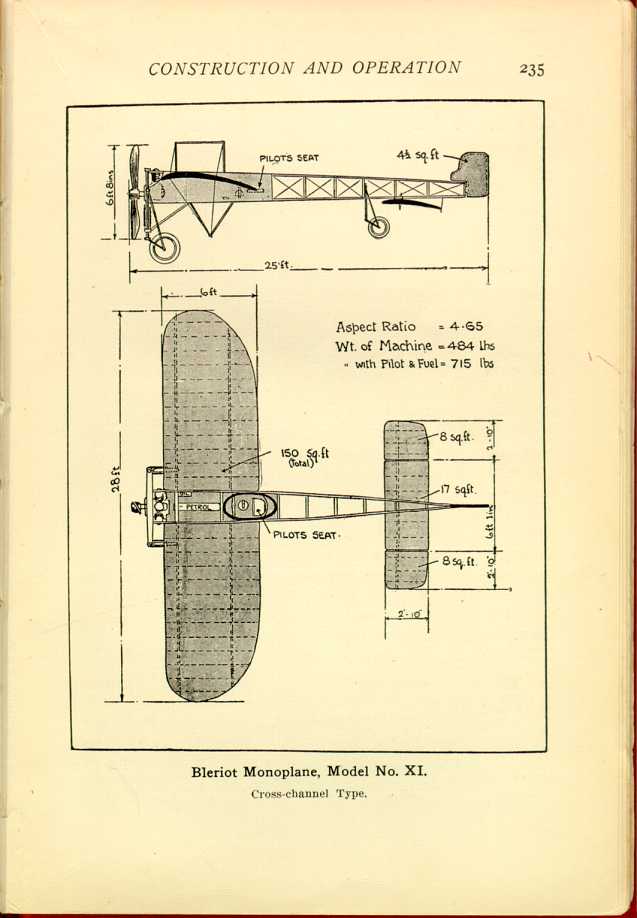The Most Popular Monoplanes.
While the number of successful monoplanes is increasing rapidly, and there is some feature of advantage in nearly all the new makes, interest centers chiefly in the Santos-Dumont, Antoinette and Bleriot machines. This is because more has

Santos-Dumont's "Demoiselle" Monoplane.
[Description: Black and white illustration: Two-part diagram of monoplane, from side and from above.]
Working Plan of Santos-Dumont's No. 20 Monoplane.
[Description: Black and white illustration: Two-part diagram of monoplane, from side and from above.]For the guidance of those who may wish to build a machine of the monoplane type after the Santos-Dumont or Bleriot models, the following details will be found useful.
Santos-Dumont—The latest production of this maker is called the "No. 20 Baby." It is of 18 feet spread, and 20 feet
Bamboo is used in the construction of the body frame, and also for the frame of the tail. The body frame consists of three bamboo poles about 2 inches in diameter at the forward end and tapering to about 1 inch at the rear. These poles are jointed with brass sockets near the rear of the main plane so they may be taken apart easily for convenience in housing or transportation. The main plane is built upon four transverse spars of ash, set at a slight dihedral angle, two being placed on each side of the central bamboo. These spars are about 2 inches wide by 1 1/8-inch deep for a few feet each side of the center of the machine, and from there taper down to an inch in depth at the center bamboo, and at their outer ends, but the width remains the same throughout their entire length. The planes are double surfaced with silk and laced above and below the bamboo ribs which run fore and aft under the main spars and terminate in a forked clip through which a wire is strung for lacing on the silk. The tail consists of a horizontal and vertical surface placed on a universal joint about 10 feet back of the rear edge of the main plane. Both of these surfaces are flat and consist of a silk covering stretched upon bamboo ribs. The horizontal surface is 6 feet 5 inches across, and 4 feet 9 inches from front to back. The vertical surface is of the same width (6 feet 5 inches) but is only 3 feet 7 inches from front to back. All the details of construction are shown in the accompanying illustration.
Power is furnished by a very light (110 pounds) Darracq motor, of the double-opposed-cylinder type. It has a bore of
Bleriot—No. XI, the latest of the Bleriot productions, and the greatest record maker of the lot, is 28 feet in spread of main plane, and depth of 6 feet in largest part. This would give a main surface of 168 square feet, but as the ends of the plane are sharply tapered from the rear, the actual surface is reduced to 150 square feet. Projecting from the main frame is an elongated tail (shown in the illustration) which carries the horizontal and vertical rudders. The former is made in three sections. The center piece is 6 feet 1 inch in spread, and 2 feet 10 inches in depth, containing 17 square feet of surface. The end sections, which are made movable for warping purposes, are each 2 feet 10 inches square, the combined surface area in the entire horizontal rudder being 33 square feet. The vertical rudder contains 4 1/2 square feet of surface, making the entire supporting area 187 1/2 square feet.
From the outer end of the propeller shaft in front to the extreme rear edge of the vertical rudder, the machine is 25 feet deep. Deducting the 6-foot depth of the main plane leaves 19 feet as the length of the rudder beam and rudders. The motor equipment consists of a 3-cylinder, air-cooled engine of about 30 h. p. placed at the front end of the body frame, and carrying on its crankshaft a two-bladed propeller 6 feet 8 inches in diameter. The engine speed is about 1,250 r. p. m. at which the propeller develops a thrust of over 200 pounds.
The Bleriot XI complete weighs 484 pounds, and with operator and fuel supply ready for a 25-or 30-mile flight, 715 pounds. One peculiarity of the Bleriot construction is that, while the ribs of the main plane are curved, there is no preliminary bending of the pieces as in other forms of construction. Bleriot has his rib pieces cut a little longer than required and, by springing them into place, secures the necessary curvature. A good view of the Bleriot plane framework is given on page 63.
